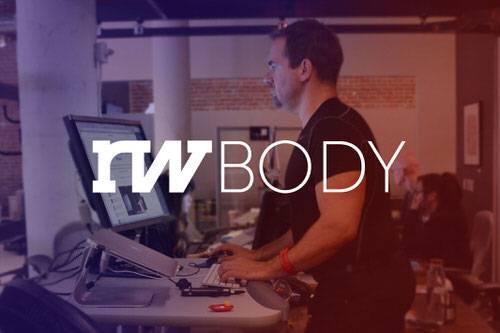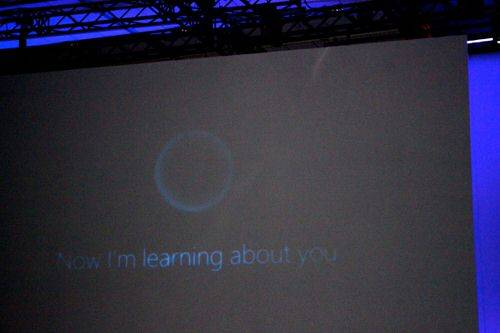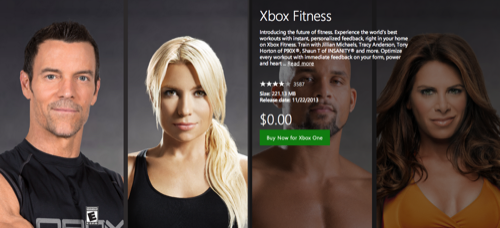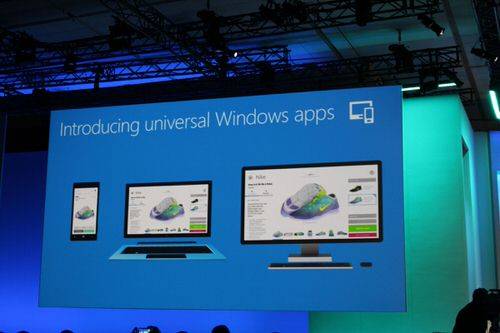
ReadWriteBody is an ongoing series where ReadWrite covers networked fitness and the quantified self.
Right now, Apple, Google, and Samsung have the buzz in digital fitness. The technologies Microsoft is unveiling this week at its Build conference could make it more of a player—but it has to get moving to seize the opportunity.
The biggest problem Microsoft has right now is its paltry market share in mobile phones, the main device people like me use to direct their exercise and nutrition.
With the rise of wearable devices, Microsoft could do an end run around Apple and Google. Its Xbox could also give it strong advantages, especially for at-home workouts. Overall, though, it faces hard sledding. It’s simply not on the radar of the most creative developers. At a Hackfit hackathon I judged last month, for example, not a single entrant built anything using Microsoft’s software or services.
If it’s going to make a difference in the health and fitness of its billions of users, here are the technologies that Microsoft needs to push to makers of fitness apps and gadgets.
Cortana, A Personal Assistant—And Also A Trainer?

Cortana, Microsoft’s voice-response system for smartphones, is an answer to Siri and Google Now, serving up quick responses to simple spoken questions. But it’s more than that: It has the potential to connect with all the apps on a phone.
That opens up some exciting possibilities. At Build, Microsoft executive Joe Belfiore demonstrated how Cortana could retrieve nutrition data from a database to tell him how many calories were in a banana. There are other scenarios as well. “Cortana, I’m going for a run with Nike” could launch the Nike+ Running app. “Cortana, what’s my heart rate?” could read my pulse off of a Bluetooth chest strap.
See also: See How I Dropped 83 Pounds With The Help Of A Smartphone (Video)
Further out, imagine Cortana acting as a personal trainer, guiding you through a workout through audio, so you don’t have to look down at your phone to see the next exercise. Today, apps like FitStar and Pear Sports offer audio coaching, but those app developers have had to create their own soundtracks. With the software-development kit for Cortana, app developers wouldn’t need to build their own sound libraries—and could also give feedback about the workout during a session, based on real-time data captured by a wearable device.

Xbox And Kinect
With its Xbox video-game console and its Kinect motion-detection device, Microsoft has all the pieces to dominate at-home exercise. That’s a huge business: People spend $265 billion a year on fitness DVDs, a market that’s begging to be taken online.
Beyond its own Xbox Fitness app, which features celebrity trainers like Jillian Michaels and Tony Horton, Microsoft could do more to encourage developers. Kinect PlayFit, which tracks calories burnt in exercise across multiple apps, is a good example of the kind of service Microsoft can offer.
Universal Windows Apps
Microsoft is making it easier to write apps that run on Windows PCs, tablets, and smartphones. Not only will that be easier for developers, but it will be easier for consumers, who will be able to buy an app once from the Windows Store and have it installed on all of their devices.
That’s appealing to app creators like FatSecret, which makes a calorie-counting app for Windows Phone. Founder and COO Lenny Moses says interest has been “definitely growing” and raves about Windows Phone’s Smart Tiles features, which can display short updates from an app on the desktop.

The notion of a universal app that can bridge desktops and phones is appealing, according to Moses: “If it means we can support the desktop better, then all the better.”
Right now, the Windows Phone app store only has a few top fitness apps, like MyFitnessPal, MapMyRun, and Runtastic. It’s typical for users to use the mobile versions of those apps to log a meal or a workout, and then use the Web version to review their data afterwards. But because of the differences between mobile operating systems and websites, it’s often jarring to go between these versions. As a user, I find myself constantly having to relearn interfaces. Switching devices but staying in what’s essentially the same app with a similar interface sounds far easier.
And Microsoft is also including the Xbox platform in universal apps—which means we could see apps that stretch from the running trail to the living room.
Josh Shaeffer, Runtastic’s vice president of business development, says that his company’s fitness apps do well on Windows Phone in Europe, where Microsoft has higher market share, and the concept of universal apps has appeal.
“For Runtastic it could make sense for us to seriously consider getting an app like Six Pack ready for cross-device use,” he said. But he notes that the company doesn’t currently have plans for such an app. Runtastic’s sole presence in the living room is its iPhone app, which can run on a large screen via Apple TV.
Bing, HealthVault, And Azure
Built into Windows 8 is Bing Health & Fitness, which helps users log exercise, medications, and food. It in turn syncs with Microsoft HealthVault, a Web-based storehouse of medical information.
Right now, Bing Health & Fitness competes with major features of several popular fitness apps. Microsoft should aim to cooperate instead, making its Health & Fitness app a central repository for data that flows in from apps like MyFitnessPal, RunKeeper, Walgreens, and a host of other that do a really good job at one specific task.
Microsoft could also market Azure, its collection of cloud services. Practically every mobile app requires some kind of storehouse for data—a heart-rate log for a workout, nutritional listings, sleep logs, and more. We generate a massive amount of data already, and the increasing wave of wearable devices will only increase our bodies’ data spew.
Azure is a place where apps can store and analyze that data—but Microsoft will have to make the case that in can do that better than Google or Amazon. One way to do that is to note how Bing and HealthVault can offer consumer-friendly interfaces to that data.
Another way Microsoft could court developers is to integrate their data with its apps and services. Bing Health & Fitness, for example, uses FatSecret’s nutritional database. More partnerships like that are ways Microsoft could increase its appeal to developers.
Windows For Devices
Microsoft also announced that a new version of its operating system called Windows for Devices would be free to license. Details on Windows for Devices are sparse—the company launched and then took down a website for the OS before Build started—but it appears to be an evolution of Windows Embedded, which Microsoft has already touted as perfect for the Internet of Things.
That seems like it’s perfect for the fast-growing wearables market. But here, I think Microsoft will have to do a lot of heavy lifting. We don’t know how Windows for Devices will do on battery life, for example, or what kind of processors it will require. Those are critical issues, along with stability. No one wants to reboot a smartwatch. The price is right—but free is just the price of admission in the wearables market, where every component’s cost and weight matters.
Shape Up, Microsoft!
So with all these assets, what is Microsoft doing to reach out to fitness-app developers? Basically nothing, a Microsoft executive told ReadWrite at Build.
That’s a shame, and it’s a good example of how much work Microsoft needs to do. It has all the pieces in place to be a major player in digital fitness. It just needs to start flexing the right muscles and moving in a coordinated manner. Sounds easy, right? But anyone who’s tried to get off the couch and start moving knows how hard that first step is.




















